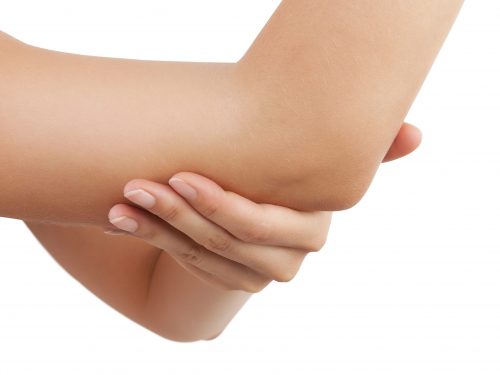Cubital tunnel syndrome TREATMENT and decompression
Cubital tunnel syndrome, also known as ulnar neuropathy, is a condition that happens when the ulnar nerve, which passes through the cubital tunnel (a tunnel of muscle, ligament, and bone) on the inside of the elbow, is injured and becomes inflamed, swollen, and irritated. This can cause tingling, pain and numbness, particularly in the little finger.
In most patients, cubital tunnel syndrome gets worse over time, so early diagnosis and treatment are important.

Cubital tunnel syndrome and decompression – facts
| Length of surgery | 1 hour |
| Anaesthesia | General anaesthetic |
| Hospital stay | Day case |
| Risks/complications of surgery | Frequent: Swelling, stiffness, discomfort on movement Infrequent: Infection, bleeding (haematoma), delayed wound healing, painful scar, numbness, damage to the nerve, recurrence, incomplete resolution of symptoms, complex regional pain syndrome |
| Recovery | 2-3 weeks until return to office work |
| Driving | 2-4 weeks |
| Hand position | Elevation above the heart level |
| Follow up | 1 week, 6 weeks, 3 months, 6 months |
| Duration of results | Permanent but depending on severity |
DOWNLOAD FURTHER INFORMATION
Cubital Tunnel Syndrome and Decompression
Any hand surgery procedure is a personal choice and understandably there are a number of questions that arise. This information sheet is a general guide for patients considering cubital tunnel syndrome treatment under the care of Dr Mackenzie. It should provide the answers to some questions that you may have.
What is cubital tunnel syndrome?
The cubital tunnel is made up of the bones in your elbow and the forearm muscles which run across the elbow joint. Your ulnar nerve passes through the tunnel to supply sensation to the fingers, and information to the muscles to help move the hand.
Cubital tunnel syndrome is compression or irritation of the ulnar nerve in a tunnel on the inside of the elbow (where your ‘funny bone’ is). The ulnar nerve provides sensation to the little finger and part of the ring finger, and power to the small muscles within the hand, therefore numbness or tingling of the little and ring fingers are usually the earliest symptom. Early on, symptoms can often be relieved with simple measures like wearing a splint or avoiding certain activities. If pressure on the ulnar nerve continues, it can lead to nerve damage and worsening symptoms. To prevent permanent damage, surgery to take pressure off the ulnar nerve may be recommended in severe cases.
What are the symptoms of cubital tunnel syndrome?
Symptoms usually begin slowly and can occur at any time. They may include:
- Numbness, tingling, burning, and pain—primarily in the little and ring. The symptoms are often felt during the night, but may be noticed during the day when the elbow is bent for long periods of time
- Occasional shock-like sensations that radiate to the little and ring fingers
- Pain or tingling that may travel up the forearm toward the shoulder
- Weakness, clumsiness in the hand and difficulty with finger coordination (such as typing or playing instruments) due to muscle weakness in the hand and arm
- Aching pain on the inside of the elbow
- In severe cases sensation may be permanently lost, and some of the muscles in the hand and base of the little finger may reduce in size